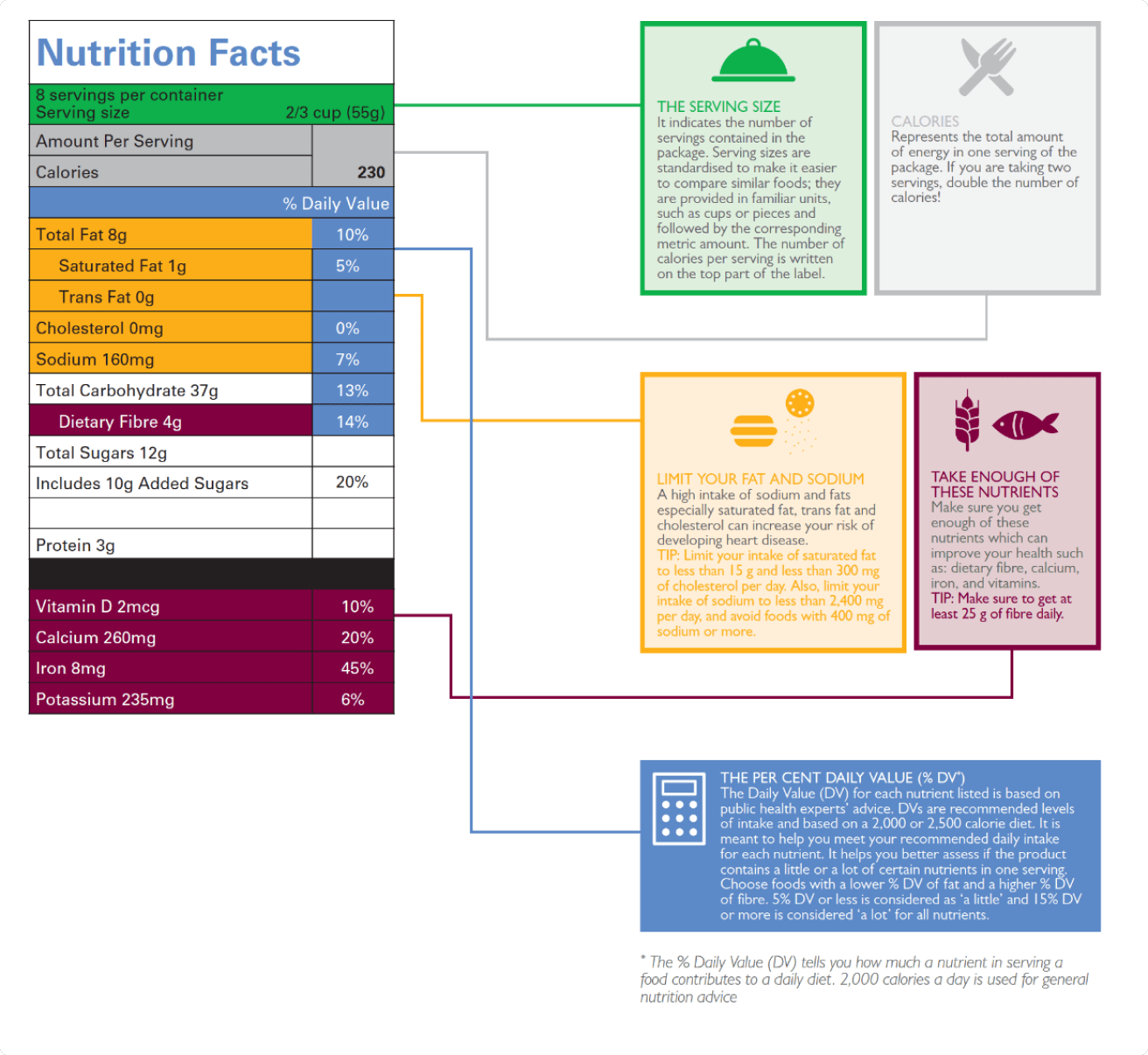Healthy eating starts with smart food shopping. Here you will find pointers on how to make the most of your trip to the grocery store. It is important to know how to read food labels to buy food that is right for you!
Ideally, you should eat food with the least number of ingredients - the more ingredients in a product, the more likely it is to be highly processed. Such foods are best avoided.
Also, consider your health risks.
For instance, If you have high cholesterol or high blood pressure, you have to follow a low-sodium diet that is rich in fruits, vegetables, and low-fat dairy. Talk to your doctor or a dietitian for personalised dietary advice. Also, consider your health risks.
The best practice is to read food labels while shopping. Nutrition labels can help you:
- Choose healthy products easily
Compare products to make healthier choices
Identify the nutrients that are present in the foods/beverages package
Understanding Nutrient Claims







